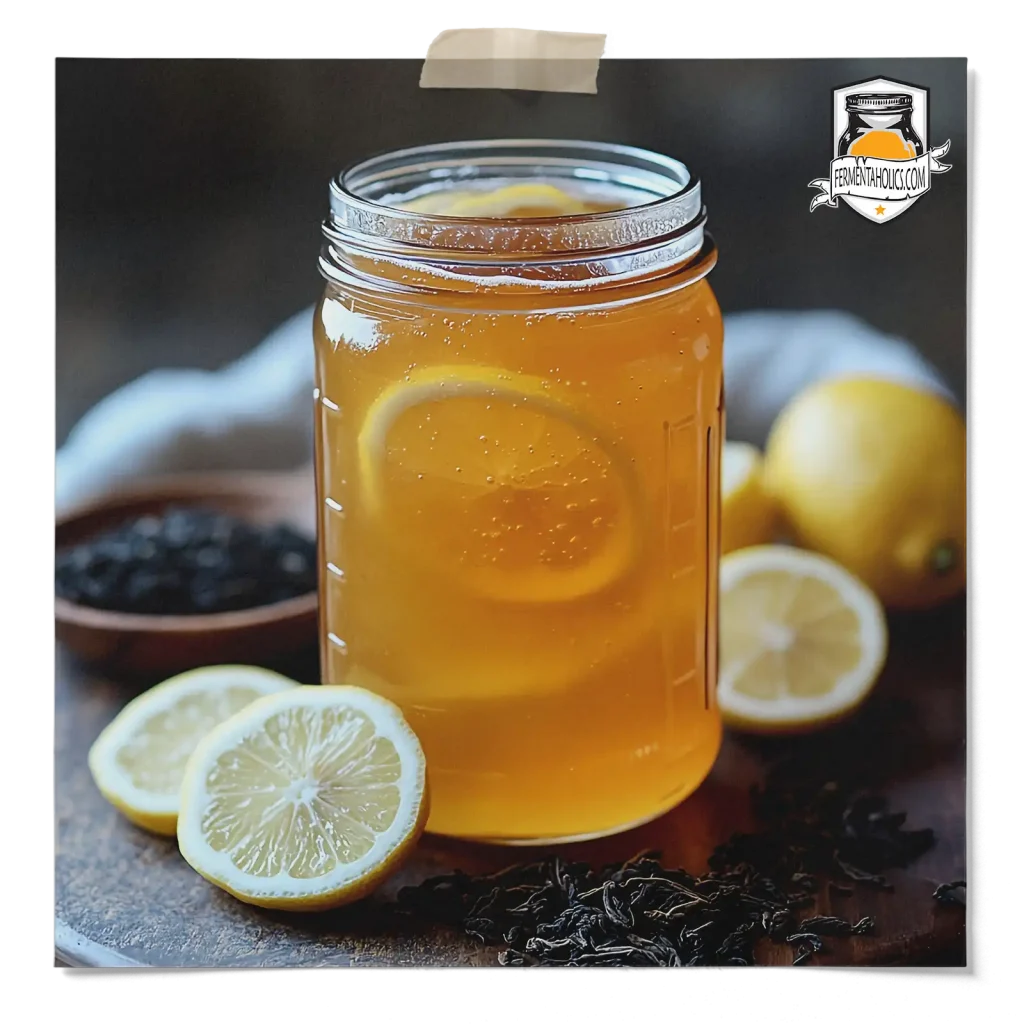
In the south, nothing screams summertime more than an ice-cold glass of sweet tea. A staple in any southern kitchen, sweet tea is a traditional drink with its first published recipe attributed to the Southern Cooking cookbook in 1928. Over the years, sweet tea has transformed itself from a high society drink to an everyday drink enjoyed year-round.
Classic sweet tea is brewed with three simple ingredients- water, sugar, and of course, black tea. As sweet tea grew in popularity, so did the creativity, adding in mint, peach, raspberry, and so many more ingredients. It seems as if every southern family has its own secret recipe. This recipe can easily be altered to fit your flavor pallet; just swap out the lemons with your favorite fruits and herbs. But trust us – you’re going to love this twist on a classic.
It’s important to note that making homemade kombucha is almost always a two-step fermentation process. Brewing kombucha is only a one-step process for those who prefer an unflavored flat kombucha. Otherwise, the steps consist of a primary fermentation and a secondary fermentation.
Primary fermentation is the first step of the kombucha brewing process. This is where your SCOBY transforms regular sweet tea into the tart and slightly sweet kombucha we love. At the end of this stage, you will have finished kombucha, but it will be flat and unflavored. Have you skipped this step? Then check out our guide on how to make kombucha at home, and for jun kombucha, see our post on how to make jun kombucha tea at home. Traditional kombucha is going to yield a bolder brew, while jun kombucha is milder and can be a bit tarter.
Secondary fermentation is the step where you bottle, carbonate, and flavor your kombucha with the addition of sugar and flavors. In this step, the finished kombucha from the primary is mixed with sugar, fruits, or other flavors before bottling it with specialized lids that can hold pressure, like flip-top bottles. The bottled kombucha is then left at room temperature for natural fermentation, where yeast carbonates the kombucha within the sealed bottle. The ideal temperature range for this process is between 75-85°F. The amount of time needed to carbonate within the bottle is highly tied to temperature, which can take anywhere from 2-10 days.
💡Since this recipe is for the secondary fermentation, to make this recipe, you’ll need to have kombucha that has finished the primary fermentation and is ready to bottle.
This recipe makes one 16-fluid-ounce bottle. A 1-gallon batch of kombucha will make seven 16-ounce bottles, so for one gallon, you will need to multiply the ingredients by 7. Before beginning this recipe, you will need to:
16 FL Oz Bottles
20
Minutes2-10 Days
This classic southern sweet tea kombucha recipe is for four 16 fluid-ounce bottles. For a gallon batch, make seven bottles. To scale this recipe to a gallon batch, multiply the ingredients by two, saving any excess ingredients for future batches. Before bottling your kombucha, remove the SCOBY pellicle along with 12-16 ounces of kombucha starter tea from your brew, and reserve for your next batch.
16 Oz Kombucha from a completed primary fermentation.
1 1/2 TBSP Assam Black Tea
1/2 Cup Sugar
2 TSP Lemon Juice
1 Cup Boiling Water
1/2 Cup Cold Water
16 Oz Swing Top Bottles
Measuring Spoons
Stove
Bring 1 cup water to boil, and add in tea ball containing loose leaf tea.
Cover the pot and let it steep for 5 minutes (the longer you steep it for the more bitter the tea will become).
Remove the liquid from the heat.
Mix in the sugar, and stir until it is completely dissolved.
Add in the cold water.
Divide the sweet tea into your bottles.
Add 1/2 TSP of lemon juice to each bottle.
Top bottle off with kombucha, leaving about 1 to 2 inches of head-space. Tightly place the caps on each bottle.
Keep bottles at room temperature for 2-10 days; it will carbonate faster at higher temperatures and slower when cold.
Burp the bottles as necessary to release excess pressure. This is done by removing the cap to allow built-up pressure to escape then placing the cap back on.
Chill in the refrigerator once you’re happy with the carbonation levels. Based on preference, you can serve as is or strain before drinking. We recommend serving over ice and enjoying on a nice, warm afternoon!
